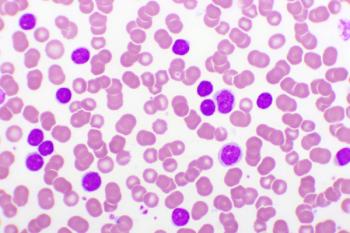
VEXAS Syndrome Often Misdiagnosed as Pyoderma Gangrenosum
In a recently published systematic review, researchers determined that VEXAS (vacuoles, E1 enzyme, X-linked, autoinflammatory, somatic) syndrome typically presents in men, with atypical morphology and with systemic symptoms.
Some cases traditionally identified as pyoderma gangrenosum (PG) in patients with certain blood diseases may actually be another rare autoimmune condition, suggest researchers.
Publishing their findings in
“Although the pathogenesis of PG is not fully elucidated, associations with
The discovery of VEXAS syndrome was reported in 2020, in which Beck et al
In the recently published systematic review, the researchers determined that the syndrome typically presents in men, with atypical morphology, and with systemic symptoms. These findings, suggest the researchers, call for an increased diligence for identifying cases of VEXAS syndrome when patients with PG present with atypical findings and have MDS or CMML. The group also suggested consideration for genetic testing for these UBA1 mutations for these patients.
The group compiled studies from various online databases, analyzing patient data to determine if PG cases previously identified in patients with MDS or CMML may actually be cases of VEXAS syndrome. Previous data have suggested that VEXAS is more common than historically expected. In another paper by Beck et al,
Researchers in this newly published systematic review analyzed data from 46 identified studies, comprising 53 patients with PG and concurrent MDS or CMML. Of these patients, the researchers pinpointed 29 as having key indicators of VEXAS syndrome.
All 29 of these patients were men, with a median age of 57.1 years, and 44.8% had an unknown subtype of PG. PG involvement was commonly observed in the trunk (48.3%), upper extremity (37.9%), and head/neck (34.5%). Most patients presented with fever (86.2%). Other symptoms included inflammatory arthritis (51.7%), chondritis (44.8%), pulmonary infiltrates (27.6%), and vasculitis (24.1%). Skin symptoms included neutrophilic dermatoses (34.5%) and nodules (17.2%).
The researchers observed that a notable number of patients were refractory to treatment, with more than 1 in 3 (41.4%) patients having no response to glucocorticoids, cyclosporine, and/or chemotherapy.
“The absence of genetic data in earlier reports presents an inherent limitation, precluding definitive diagnoses of VEXAS syndrome; however, we employed a detailed comprehensive review of all cases, aligning clinical and laboratory findings with established characteristics of VEXAS syndrome,” described the researchers. “Despite the retrospective nature of our data and possibility of publication bias, our review highlights that PG in the setting of MDS and CMML may have, historically, represented syndromic disease states including Sweet syndrome and VEXAS, presenting with neutrophilic dermatoses and PG-like manifestations.”
References
1. Croitoru DO, Huang RS, McMullen EP, et al. Investigating historic cases of pyoderma gangrenosum in myelodysplastic syndrome and chronic myelomonocytic leukemia for possible VEXAS syndrome: a systematic review. J Am Acad Dermatol. Published online June 19, 2024. doi:10.1016/j.jaad.2024.05.086
2. Beck DB, Ferrada MA, Sikora KA, et al. Somatic mutations in UBA1 and severe adult-onset autoinflammatory disease. N Engl J Med. 2020;383(27):2628-2638. doi: 10.1056/NEJMoa2026834
3. Beck DB, Bodian DL, Shah V, et al. Estimated prevalence and clinical manifestations of UBA1 variants associated with VEXAS syndrome in a clinical population. 2023;329(4):318-324. doi:10.1001/jama.2022.24836
Newsletter
Stay ahead of policy, cost, and value—subscribe to AJMC for expert insights at the intersection of clinical care and health economics.







































